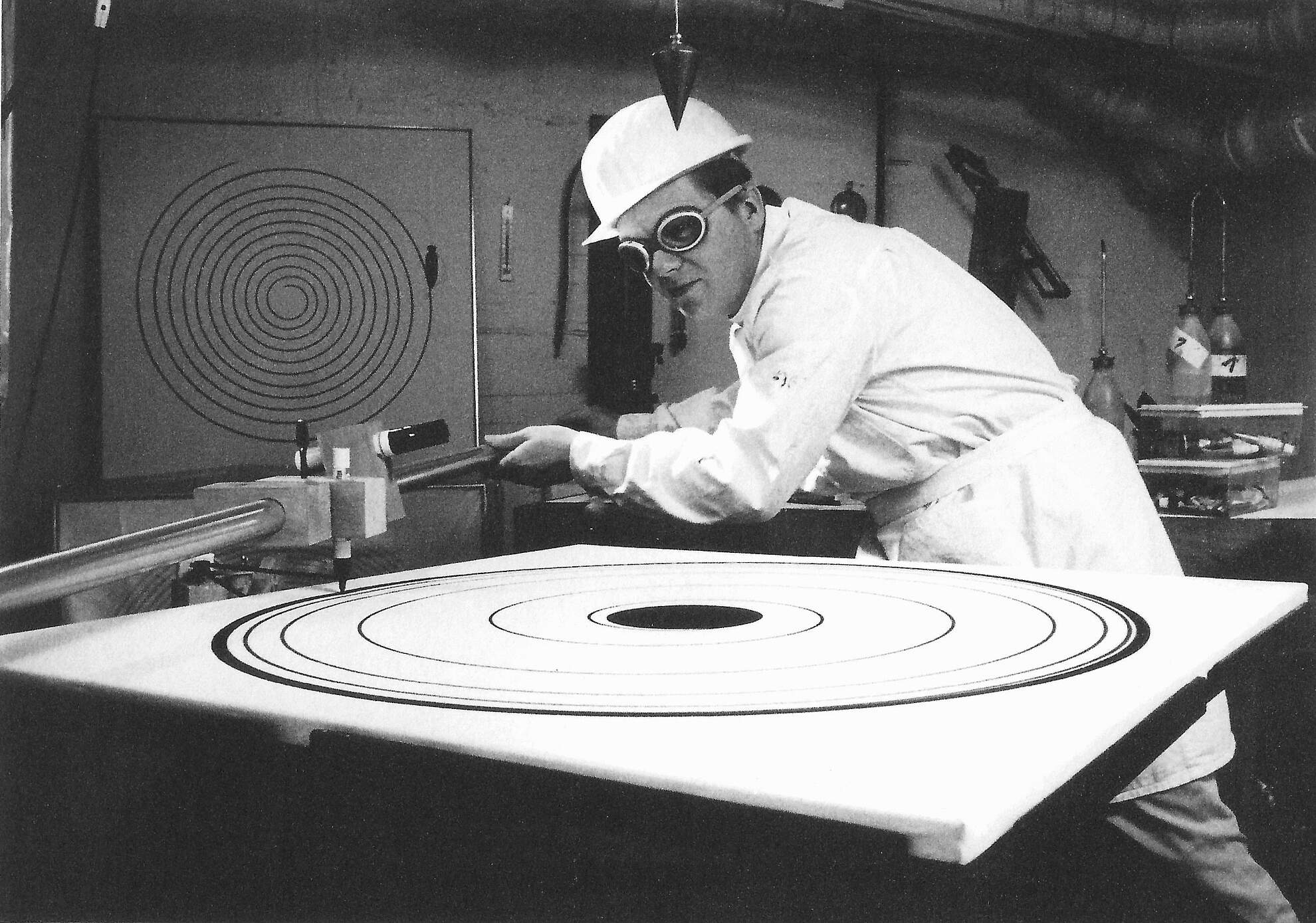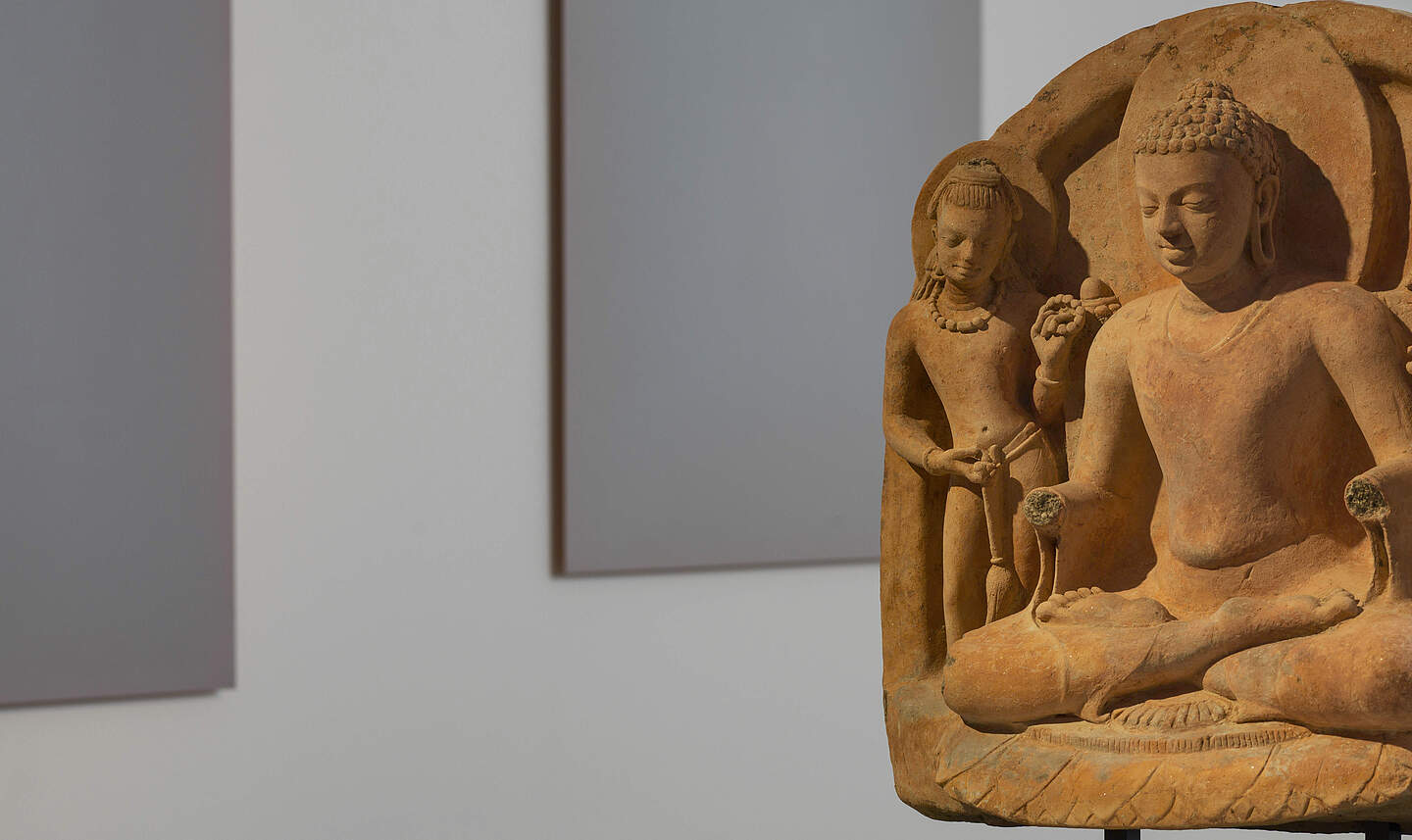
ROTAR
Drawings & Tribal Art from Africa, Oceania and the Americas
Zurich
An extensive selection of drawings by the "magician of the spiral," Robert ROTAR (1926-1999), is on view at Galerie Dierking's Paradeplatz space until November 16. The show follows the highly acclaimed solo presentation of ROTAR's spiral paintings and sculptures that Galerie Dierking showed at Art Cologne in spring 2013. "Spiral = cosmos, spiral = life, spiral = action," the artist wrote in the late 1950s. His spirals have a magical attraction, something suggestive. They begin to vibrate, drain inward, explode outward, swirl in empty space or end in circular form. To let the "spiral" emerge in "time" and "space" was the artist's intention: "I paint spirals in every shape. I am fascinated by their emergence through centrifugal force. Like the theory of relativity, I use the phenomenon of time in conjunction with rotation as the 4th coordinate in space. While I subjectively connect two 'fixed' points, the spiral tendency becomes visible" (1969).
SPIRAL = COSMOS,
SPIRAL = LIFE,
SPIRAL = action
Rotar
ROTAR, born in Berlin in 1926 and died in Düsseldorf in 1999, occupies a certain special position within the German avant-garde art scene of the second half of the 20th century. It is difficult to assign his work to an artist group or direction.
ROTAR's central motif is the spiral, which he dealt with continuously over 45 years of his artistic work. In this context, he also sought an intensive exchange with brain and genetic researchers, astro- and atomic physicists and molecular biologists, in order to achieve further insights into his subject area. At the same time he pursued an intensive study of philosophical and religious writings dealing with spiral forms. In 1963, he constructed a painting machine that artistically put on paper his ideas of space and time spirals by means of a rotation principle. The presentation in the exhibition concentrates on works that were created in the period between 1967 and 1978 through the addition of the painting machine. The emphasis is on clear linear-graphic ink drawings on the one hand and on the other hand on the monochrome sheets, which were "wiped" with ink or oil paint and have a high sensual-aesthetic quality. A film documentation clarifies the fine craft and artistic process of creation. The exhibition is accompanied by an extensive publication with texts by Ingrid Skiebe and Hans Ulrich Reck and a foreword by Dierk Dierking.
ROTAR
Drawings & Tribal Art from Africa, Oceania and the Americas
Zurich
SPIRAL = COSMOS,
SPIRAL = LIFE,
SPIRAL = action
Rotar
An extensive selection of drawings by the "magician of the spiral," Robert ROTAR (1926-1999), is on view at Galerie Dierking's Paradeplatz space until November 16. The show follows the highly acclaimed solo presentation of ROTAR's spiral paintings and sculptures that Galerie Dierking showed at Art Cologne in spring 2013. "Spiral = cosmos, spiral = life, spiral = action," the artist wrote in the late 1950s. His spirals have a magical attraction, something suggestive. They begin to vibrate, drain inward, explode outward, swirl in empty space or end in circular form. To let the "spiral" emerge in "time" and "space" was the artist's intention: "I paint spirals in every shape. I am fascinated by their emergence through centrifugal force. Like the theory of relativity, I use the phenomenon of time in conjunction with rotation as the 4th coordinate in space. While I subjectively connect two 'fixed' points, the spiral tendency becomes visible" (1969).
ROTAR, born in Berlin in 1926 and died in Düsseldorf in 1999, occupies a certain special position within the German avant-garde art scene of the second half of the 20th century. It is difficult to assign his work to an artist group or direction.
ROTAR's central motif is the spiral, which he dealt with continuously over 45 years of his artistic work. In this context, he also sought an intensive exchange with brain and genetic researchers, astro- and atomic physicists and molecular biologists, in order to achieve further insights into his subject area. At the same time he pursued an intensive study of philosophical and religious writings dealing with spiral forms. In 1963, he constructed a painting machine that artistically put on paper his ideas of space and time spirals by means of a rotation principle. The presentation in the exhibition concentrates on works that were created in the period between 1967 and 1978 through the addition of the painting machine. The emphasis is on clear linear-graphic ink drawings on the one hand and on the other hand on the monochrome sheets, which were "wiped" with ink or oil paint and have a high sensual-aesthetic quality. A film documentation clarifies the fine craft and artistic process of creation. The exhibition is accompanied by an extensive publication with texts by Ingrid Skiebe and Hans Ulrich Reck and a foreword by Dierk Dierking.
IMPRINT
© DIERKING 2025

